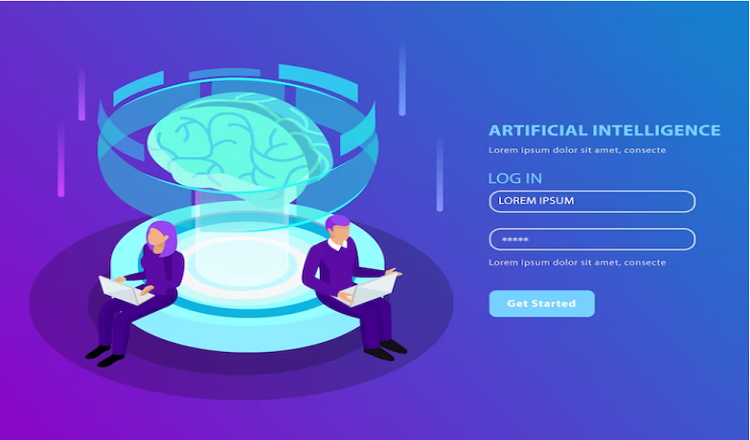Analyzing the role of artificial intelligence and machine learning in cybersecurity

In today’s linked world, it’s hard to say enough about how important cybersecurity is. The United States is a prime target for cyber threats because it has one of the biggest economies and is a centre for technological innovation. No one is safe from hackers, whose methods are always changing. This is true for both government agencies and private companies. Artificial intelligence (AI) and machine learning (ML) can help with this. These technologies could completely change how we think about cybersecurity by giving us better defence against new threats.
AI and machine learning are not new ideas, but their use in defence is becoming more popular. AI means that machines can do things that usually take human intelligence, like learn from experience, spot patterns, and make decisions. ML, on the other hand, is a part of AI that includes training algorithms to make predictions or take actions based on data. By using these technologies, cybersecurity professionals can find threats in real time, act quickly to attacks, and even predict and stop future threats.
AI and ML have their own problems, just like any other new technology. There are a lot of problems that need to be fixed, such as a lack of qualified workers, problems with the quality and amount of data, and ethical concerns. Still, the possible benefits of AI and ML in cybersecurity are too great to ignore. In this piece, we’ll look at the role of AI and ML in cybersecurity in the United States. We’ll look at their pros and cons, how they can be used, and what the future holds for them. So, let’s get started and see how these tools are changing how cybersecurity is done.
Understanding Artificial Intelligence and Machine Learning for Cybersecurity
AI and ML are changing the way we think about safety. AI means that machines can do things that usually take human intelligence, like learn from experience, spot patterns, and make decisions. On the other hand, machine learning (ML) includes training algorithms to use data to make predictions or take actions.
These technologies are important for cybersecurity because they can find and react to threats in real time, and they may also be able to predict and stop future threats. Traditional cybersecurity measures depend on rules and signatures that don’t change, but AI and ML can adapt to new threats and learn from their past mistakes. This makes it possible for cybersecurity to be more cautious and effective, which lowers the risk of data breaches and other cyber attacks.
Why artificial intelligence and machine learning are good for cybersecurity
Artificial intelligence (AI) and machine learning (ML) can help improve safety in many ways. Real-time threat detection is one of the most important benefits because it lets possible cyber attacks be found faster and more accurately. Another benefit is that AI and ML can find trends and behaviours that are out of the ordinary and could be signs of threats.
Another important benefit of these technologies is that they can automatically respond to cyber dangers. This makes it possible to stop attacks quickly and effectively. AI and ML also make it possible to do advanced behavioural analysis, which can find strange behaviour and help stop insider attacks. By taking advantage of these benefits, cybersecurity experts can better protect their companies from new threats and lower the risk of cyber attacks.
Challenges of Using AI and ML in Cybersecurity
Even though using artificial intelligence (AI) and machine learning (ML) in defence has many benefits, there are also some problems that need to be solved. One of the biggest problems is that there aren’t enough skilled workers in this area to implement and manage these technologies well.
AI and ML also have trouble when they don’t have enough or good data. This is because they need a lot of high-quality data. Another problem is explaining AI and machine learning. It can be hard to understand how these technologies make decisions, which raises questions about responsibility and openness. Concerns about privacy and bias that come up when AI and ML are used in hacking must also be taken into account. By tackling these problems, we can use these tools more effectively to improve cybersecurity in the US.
Examples of how AI and machine learning are used in cybersecurity
AI and ML have many uses in defence, especially in the US. One area where these technologies are being used is network security, because AI and ML can find and react to possible threats in real time, making the network safer overall.
AI and ML are also used in endpoint security, which means they can find malware and other threats on individual machines and stop them. Another use case is cloud security, since AI and ML can watch cloud settings for possible threats and holes. AI and ML are also being used to help with threat intelligence because they can look at a lot of data to find trends and predict future threats. Fraud tracking is another area where these technologies are being used. This makes it easier and more accurate to find fraudulent behaviour.
What will happen with AI and machine learning in cybersecurity in the future?
The future of artificial intelligence (AI) and machine learning (ML) in defence looks good, and new trends show that these technologies could be even more useful in the future. One new trend is using AI and ML to find threats. This makes it easier to find and stop computer attacks before they happen.
AI and ML could have a big effect on cybersecurity because they can handle many tasks and help people respond to threats faster and more accurately. There are also a lot of ways for businesses and industries to use AI and ML in cybersecurity, such as by making systems that can identify and respond to advanced threats. By using these technologies, businesses can improve their cybersecurity and be better prepared for new dangers in the US and around the world.
Conclusion
In the United States, artificial intelligence (AI) and machine learning (ML) are becoming more and more important for defence. AI and ML have a lot of benefits, such as the ability to find threats in real time, to find anomalies better, to automatically respond to online threats, and to analyse behaviour in more detail.
But there are also problems that need to be fixed, such as a lack of skilled workers, problems with data quality and amount, AI and ML that are hard to understand, and ethical concerns. Even with these problems, AI and ML have many uses in cybersecurity, such as network security, device security, cloud security, threat intelligence, and fraud detection.
As we look to the future, new AI and ML trends show that these technologies could be even more useful in defence. For cybersecurity, companies must invest in AI and ML, as the benefits of these technologies far outweigh the problems they can cause. By using AI and ML, organisations in the USA can better protect themselves from new threats and improve their total cybersecurity.
Read More You May Like:








